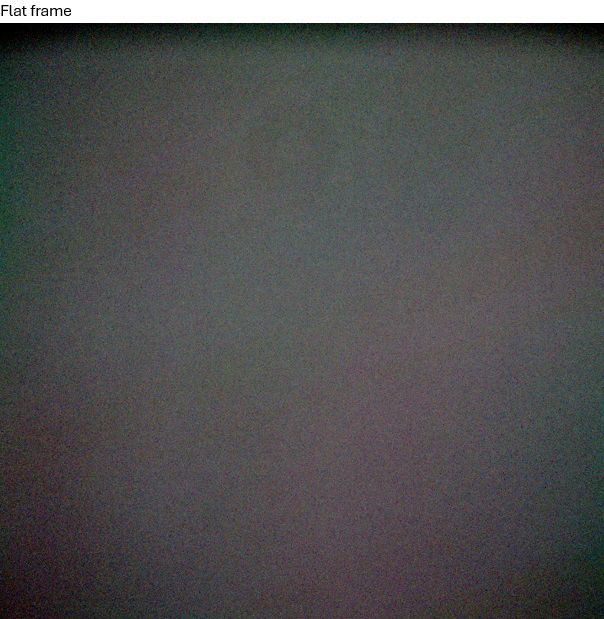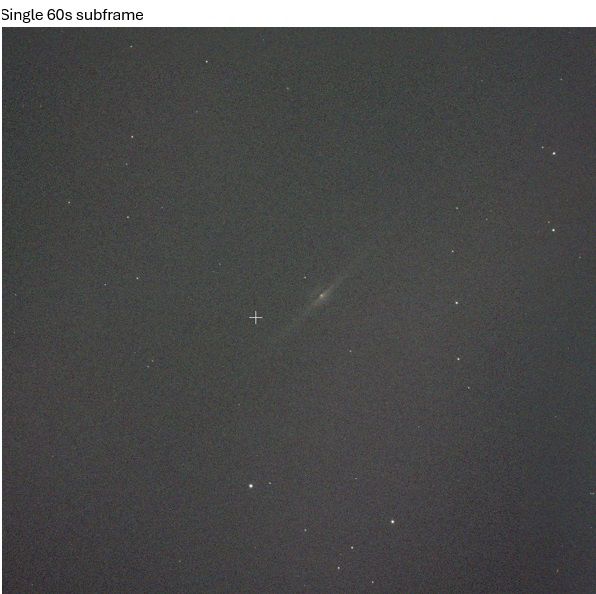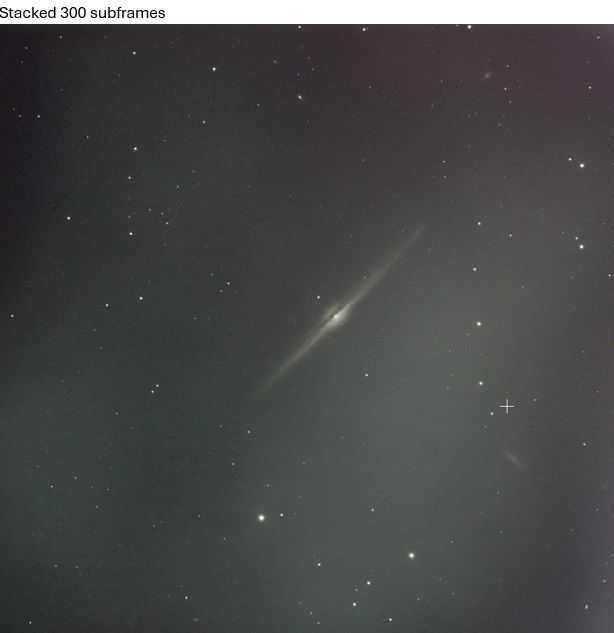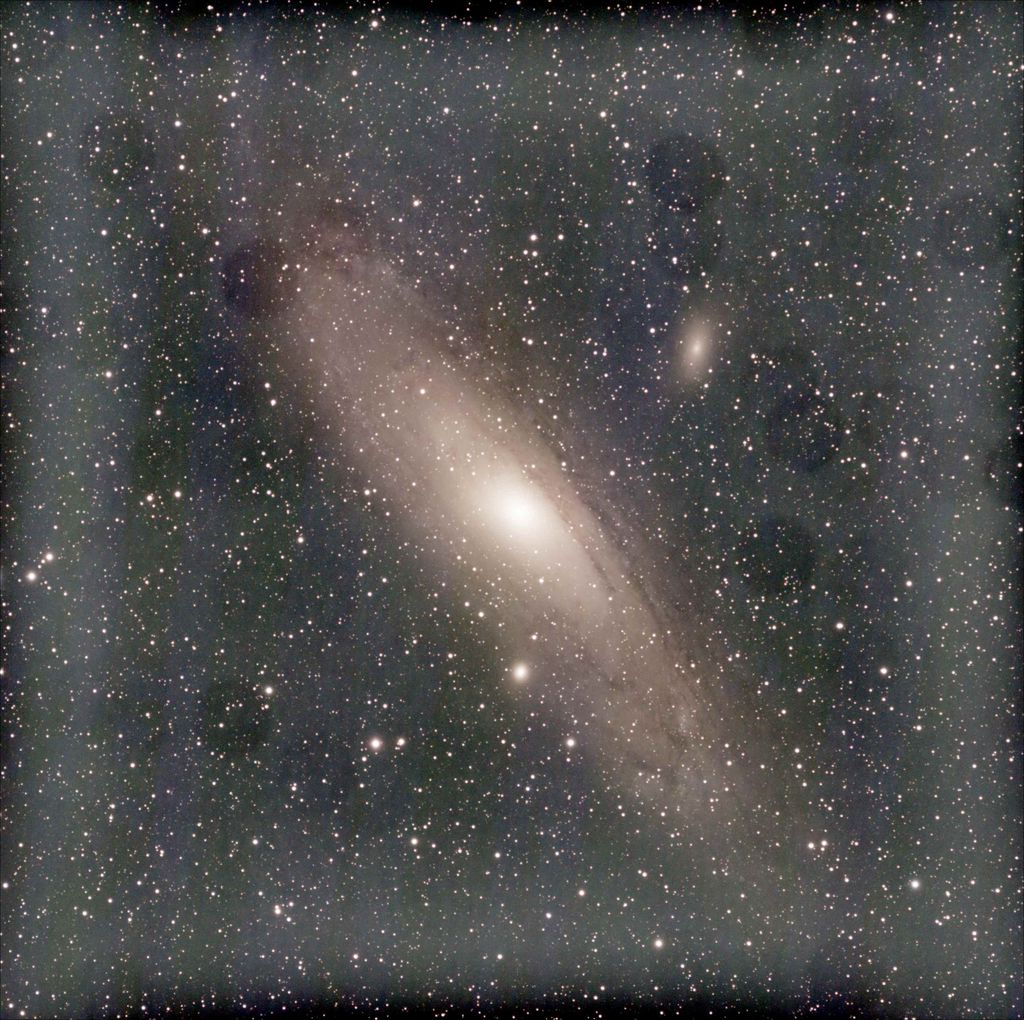Hi everyone, I’m experiencing an issue with my 533mc Pro camera and could use some advice. When I take RGB pictures using the Antlia Quandband filter, I notice two large reddish areas in my images. This problem persists even in my flats, and the WBPP process doesn’t seem to eliminate these artifacts. Interestingly, the same reddish areas appear when I shoot without filters as well. However, when I switch to narrowband (NB) imaging, these artifacts become much less pronounced. I’ve tried all sorts of gradient removal techniques, but the reddish areas just turn white and the background remains unclean. Has anyone encountered a similar issue or have any suggestions on how to address this? Any feedback would be greatly appreciated! Thanks in advance for your help.    |
You cannot like this item. Reason: "ANONYMOUS".
You cannot remove your like from this item.
Editing a post is only allowed within 24 hours after creating it.
You cannot Like this post because the topic is closed.
Copy the URL below to share a direct link to this post.
This post cannot be edited using the classic forums editor.
To edit this post, please enable the "New forums experience" in your settings.
You obviously have a signficant amount of LP if flats don't work. Try using Graxpert.
|
You cannot like this item. Reason: "ANONYMOUS".
You cannot remove your like from this item.
Editing a post is only allowed within 24 hours after creating it.
You cannot Like this post because the topic is closed.
Copy the URL below to share a direct link to this post.
This post cannot be edited using the classic forums editor.
To edit this post, please enable the "New forums experience" in your settings.
Could you share more information about your settings like gain, exposure time etc.?
|
You cannot like this item. Reason: "ANONYMOUS".
You cannot remove your like from this item.
Editing a post is only allowed within 24 hours after creating it.
You cannot Like this post because the topic is closed.
Copy the URL below to share a direct link to this post.
This post cannot be edited using the classic forums editor.
To edit this post, please enable the "New forums experience" in your settings.
I see similar effects to that in my lights and flats from my ASI533MC Pro but only in the auto-stretched jpegs that ASIAir produces for previews. If you open a single sub in pix insight and do an STF do you see the same result?
|
You cannot like this item. Reason: "ANONYMOUS".
You cannot remove your like from this item.
Editing a post is only allowed within 24 hours after creating it.
You cannot Like this post because the topic is closed.
Copy the URL below to share a direct link to this post.
This post cannot be edited using the classic forums editor.
To edit this post, please enable the "New forums experience" in your settings.
I'm curious, how are you taking your flat frame? Are you using a light panel?
|
You cannot like this item. Reason: "ANONYMOUS".
You cannot remove your like from this item.
Editing a post is only allowed within 24 hours after creating it.
You cannot Like this post because the topic is closed.
Copy the URL below to share a direct link to this post.
This post cannot be edited using the classic forums editor.
To edit this post, please enable the "New forums experience" in your settings.
Craig Dixon:
I see similar effects to that in my lights and flats from my ASI533MC Pro but only in the auto-stretched jpegs that ASIAir produces for previews. If you open a single sub in pix insight and do an STF do you see the same result? I can see that we share almost the same setup (190MN + 533MC Pro). The 60s subframe i shared is stretched on PI.
|
You cannot like this item. Reason: "ANONYMOUS".
You cannot remove your like from this item.
Editing a post is only allowed within 24 hours after creating it.
You cannot Like this post because the topic is closed.
Copy the URL below to share a direct link to this post.
This post cannot be edited using the classic forums editor.
To edit this post, please enable the "New forums experience" in your settings.
I'm curious, how are you taking your flat frame? Are you using a light panel? Yes, using a light panel and a white shirt. I'm following the same practice for my NB as well.
|
You cannot like this item. Reason: "ANONYMOUS".
You cannot remove your like from this item.
Editing a post is only allowed within 24 hours after creating it.
You cannot Like this post because the topic is closed.
Copy the URL below to share a direct link to this post.
This post cannot be edited using the classic forums editor.
To edit this post, please enable the "New forums experience" in your settings.
Armin Lukas:
Could you share more information about your settings like gain, exposure time etc.? I'm using Skywatcher 190MN with 533mc pro cooled at -5 and 100 gain. I'm at Bortle 8 so i usually don't tend to exceed 60sec when i shot RGB.
|
You cannot like this item. Reason: "ANONYMOUS".
You cannot remove your like from this item.
Editing a post is only allowed within 24 hours after creating it.
You cannot Like this post because the topic is closed.
Copy the URL below to share a direct link to this post.
This post cannot be edited using the classic forums editor.
To edit this post, please enable the "New forums experience" in your settings.
Aymen Aissa:
I'm curious, how are you taking your flat frame? Are you using a light panel?
Yes, using a light panel and a white shirt. I'm following the same practice for my NB as well. That's exactly how I do it.  I would suggest removing the camera from the system, putting it on a bench, and take a 'flat' with nothing else attached. If this is an issue with the camera, it will show up there as well. Since the pattern looks identical in your flat and light frames, it's either in your optical train or the camera itself.
|
You cannot like this item. Reason: "ANONYMOUS".
You cannot remove your like from this item.
Editing a post is only allowed within 24 hours after creating it.
You cannot Like this post because the topic is closed.
Copy the URL below to share a direct link to this post.
This post cannot be edited using the classic forums editor.
To edit this post, please enable the "New forums experience" in your settings.
My flats look very similar to yours when I use my 533MC.
You need to ensure that your flats are ~30k-35K ADU. If they are too bright, they overcorrect, resulting in the "whitening" overcorrection you see.
I take flats with sheets of white paper that I can add/remove pieces until I get an average ADU in that 30-35k range.
What caused me issues when I was troubleshooting is that it is not immediately apparent from the stretched flat what the average value is.
You may be able to "save" your flats by modifying the master flat to reduce the ADU, or you may want to retake them.
|
You cannot like this item. Reason: "ANONYMOUS".
You cannot remove your like from this item.
Editing a post is only allowed within 24 hours after creating it.
You cannot Like this post because the topic is closed.
Copy the URL below to share a direct link to this post.
This post cannot be edited using the classic forums editor.
To edit this post, please enable the "New forums experience" in your settings.
Daniel Tomcej:
My flats look very similar to yours when I use my 533MC.
You need to ensure that your flats are ~30k-35K ADU. If they are too bright, they overcorrect, resulting in the "whitening" overcorrection you see.
I take flats with sheets of white paper that I can add/remove pieces until I get an average ADU in that 30-35k range.
What caused me issues when I was troubleshooting is that it is not immediately apparent from the stretched flat what the average value is.
You may be able to "save" your flats by modifying the master flat to reduce the ADU, or you may want to retake them. Thanks for the insight, Daniel. I will have a look at my flats and let you know the poutcome.
|
You cannot like this item. Reason: "ANONYMOUS".
You cannot remove your like from this item.
Editing a post is only allowed within 24 hours after creating it.
You cannot Like this post because the topic is closed.
Copy the URL below to share a direct link to this post.
This post cannot be edited using the classic forums editor.
To edit this post, please enable the "New forums experience" in your settings.
Aymen Aissa:
I'm curious, how are you taking your flat frame? Are you using a light panel?
Yes, using a light panel and a white shirt. I'm following the same practice for my NB as well.
That's exactly how I do it. 
I would suggest removing the camera from the system, putting it on a bench, and take a 'flat' with nothing else attached. If this is an issue with the camera, it will show up there as well.
Since the pattern looks identical in your flat and light frames, it's either in your optical train or the camera itself.
*Ideally flats are meant to correct all these patterns as the noise/artifact will be subtracted during the stacking process. As Daniel mentioned, I will check if my flats are over correcting the lights.
|
You cannot like this item. Reason: "ANONYMOUS".
You cannot remove your like from this item.
Editing a post is only allowed within 24 hours after creating it.
You cannot Like this post because the topic is closed.
Copy the URL below to share a direct link to this post.
This post cannot be edited using the classic forums editor.
To edit this post, please enable the "New forums experience" in your settings.
Aymen Aissa:
Aymen Aissa:
I'm curious, how are you taking your flat frame? Are you using a light panel?
Yes, using a light panel and a white shirt. I'm following the same practice for my NB as well.
That's exactly how I do it. 
I would suggest removing the camera from the system, putting it on a bench, and take a 'flat' with nothing else attached. If this is an issue with the camera, it will show up there as well.
Since the pattern looks identical in your flat and light frames, it's either in your optical train or the camera itself.
*Ideally flats are meant to correct all these patterns as the noise/artifact will be subtracted during the stacking process. As Daniel mentioned, I will check if my flats are over correcting the lights. Sorry, I assumed the light frame you shared was not corrected by the flat, and that this pattern was showing up in both light and flat frames. If it's showing up in your uncorrected light frames, it's not going to be caused by flat over-correction. You're not getting anywhere near 1/2 your well depth in the dark areas of your light frame.
|
You cannot like this item. Reason: "ANONYMOUS".
You cannot remove your like from this item.
Editing a post is only allowed within 24 hours after creating it.
You cannot Like this post because the topic is closed.
Copy the URL below to share a direct link to this post.
This post cannot be edited using the classic forums editor.
To edit this post, please enable the "New forums experience" in your settings.
How long are your flat exposures and what is your gain setting , I set Adu at 35 k Adu but for cmos cameras you need a exposer of 3 seconds or more (Adam Block recommends for cmos cameras it’s in one of these videos 3 part series) obviously you may need to experiment to get the correct exposure/Adu value with more or less paper unless you can adjust the flat panel brightness , I’m assuming you’re not using a coma corrector if your using a MN 190 https://youtu.be/Kkg441UBNpo?feature=sharedDave
|
You cannot like this item. Reason: "ANONYMOUS".
You cannot remove your like from this item.
Editing a post is only allowed within 24 hours after creating it.
You cannot Like this post because the topic is closed.
Copy the URL below to share a direct link to this post.
This post cannot be edited using the classic forums editor.
To edit this post, please enable the "New forums experience" in your settings.
Jumping in late here…are you using a dark library to calibrate your images with darks? I was having a similar issue with my 533MC Pro and L-extreme filter where my flats were not calibrated properly and it was suggested that I try shooting new darks. My dark library was 12 months old and I used the new FBPP in Pixinsight to calibrate and stack my images and the issue was solved. I used FBPP with both my old and new darks and with the minimal configurable settings to change the variables between each integration which leads me to believe the issue was with my dark frames. That was interesting to me.
|
You cannot like this item. Reason: "ANONYMOUS".
You cannot remove your like from this item.
Editing a post is only allowed within 24 hours after creating it.
You cannot Like this post because the topic is closed.
Copy the URL below to share a direct link to this post.
This post cannot be edited using the classic forums editor.
To edit this post, please enable the "New forums experience" in your settings.
Hey, I'll jump in on the late bandwagon here as well.
I don't think you have a flat issue. I believe what you're picking up is a stray red light from your mount somewhere, or something near by. Tape up all your red lights, or turn them off if possible, and try again.
**Edit: Maybe not, since it's actually present in your flats, I thought it was just lights. I misread. Sorry.
|
You cannot like this item. Reason: "ANONYMOUS".
You cannot remove your like from this item.
Editing a post is only allowed within 24 hours after creating it.
You cannot Like this post because the topic is closed.
Copy the URL below to share a direct link to this post.
This post cannot be edited using the classic forums editor.
To edit this post, please enable the "New forums experience" in your settings.
 Hi Everyone First Light, First time user of a cooled camera, I am using the QHY 533 color camera. This is a stacked image of about 4 hours of data, the image above is only calibrated with dark frames. I did used flats and dark flats to remove the artifacts but i am not able to remove the square shape gradient. The camera was cooled to -10 degrees. The flats were almost 3 seconds long(Taken with NINA flat assistance). Gain 68 Offset 20 I am processing in pixinsight and using DBE but i cannot get rid of this. What am i doing wrong here Telescope REDCAT51
|
You cannot like this item. Reason: "ANONYMOUS".
You cannot remove your like from this item.
Editing a post is only allowed within 24 hours after creating it.
You cannot Like this post because the topic is closed.
Copy the URL below to share a direct link to this post.
This post cannot be edited using the classic forums editor.
To edit this post, please enable the "New forums experience" in your settings.
Did you crop the border so no stacking artefacts , your flats aren’t working either what program did you stack with?
Dave
|
You cannot like this item. Reason: "ANONYMOUS".
You cannot remove your like from this item.
Editing a post is only allowed within 24 hours after creating it.
You cannot Like this post because the topic is closed.
Copy the URL below to share a direct link to this post.
This post cannot be edited using the classic forums editor.
To edit this post, please enable the "New forums experience" in your settings.
Hassaan Zaheer:

Hi Everyone
First Light, First time user of a cooled camera,
I am using the QHY 533 color camera.
This is a stacked image of about 4 hours of data,
the image above is only calibrated with dark frames.
I did used flats and dark flats to remove the artifacts but i am not able to remove the square shape gradient.
The camera was cooled to -10 degrees.
The flats were almost 3 seconds long(Taken with NINA flat assistance).
Gain 68
Offset 20
I am processing in pixinsight and using DBE but i cannot get rid of this.
What am i doing wrong here
Telescope REDCAT51 There is something in your settings because of which flats are not calibrating. Check PI settings. This is not calibrated at all. Even the 'square shape gradient' will be taken care of with flat calibration. If you can post your calibration frames and settings on PI then people may be able to help.
|
You cannot like this item. Reason: "ANONYMOUS".
You cannot remove your like from this item.
Editing a post is only allowed within 24 hours after creating it.
You cannot Like this post because the topic is closed.
Copy the URL below to share a direct link to this post.
This post cannot be edited using the classic forums editor.
To edit this post, please enable the "New forums experience" in your settings.
Rajat Kumar:
Hassaan Zaheer:

Hi Everyone
First Light, First time user of a cooled camera,
I am using the QHY 533 color camera.
This is a stacked image of about 4 hours of data,
the image above is only calibrated with dark frames.
I did used flats and dark flats to remove the artifacts but i am not able to remove the square shape gradient.
The camera was cooled to -10 degrees.
The flats were almost 3 seconds long(Taken with NINA flat assistance).
Gain 68
Offset 20
I am processing in pixinsight and using DBE but i cannot get rid of this.
What am i doing wrong here
Telescope REDCAT51
There is something in your settings because of which flats are not calibrating. Check PI settings. This is not calibrated at all. Even the 'square shape gradient' will be taken care of with flat calibration. If you can post your calibration frames and settings on PI then people may be able to help. so sorry, but i forgot to mention that the image is not callibrated at all, i was just showing the original image to show the extent of the issue.
|
You cannot like this item. Reason: "ANONYMOUS".
You cannot remove your like from this item.
Editing a post is only allowed within 24 hours after creating it.
You cannot Like this post because the topic is closed.
Copy the URL below to share a direct link to this post.
This post cannot be edited using the classic forums editor.
To edit this post, please enable the "New forums experience" in your settings.
Dave B:
Did you crop the border so no stacking artefacts , your flats aren’t working either what program did you stack with?
Dave no i did not crop the borders. As this is my first image with a cooled camera ever. I was under the impression that the image would not need to be cropped and would be free of such artifacts
|
You cannot like this item. Reason: "ANONYMOUS".
You cannot remove your like from this item.
Editing a post is only allowed within 24 hours after creating it.
You cannot Like this post because the topic is closed.
Copy the URL below to share a direct link to this post.
This post cannot be edited using the classic forums editor.
To edit this post, please enable the "New forums experience" in your settings.
Hassaan Zaheer:
Dave B:
Did you crop the border so no stacking artefacts , your flats aren’t working either what program did you stack with?
Dave
no i did not crop the borders.
As this is my first image with a cooled camera ever. I was under the impression that the image would not need to be cropped and would be free of such artifacts No you still need to crop , think of it like stacking a sliced loaf there will be slices not exactly aligned . Dave
|
You cannot like this item. Reason: "ANONYMOUS".
You cannot remove your like from this item.
Editing a post is only allowed within 24 hours after creating it.
You cannot Like this post because the topic is closed.
Copy the URL below to share a direct link to this post.
This post cannot be edited using the classic forums editor.
To edit this post, please enable the "New forums experience" in your settings.
Hassaan Zaheer:
no i did not crop the borders.
As this is my first image with a cooled camera ever. I was under the impression that the image would not need to be cropped and would be free of such artifacts To th extent where there is some random overlapping you won't need to crop the image if you used LocalNormalization (best) or some other form of re-normalization during the image stacking. This isn't dependent on whether the camera is cooled or not.
|
You cannot like this item. Reason: "ANONYMOUS".
You cannot remove your like from this item.
Editing a post is only allowed within 24 hours after creating it.
You cannot Like this post because the topic is closed.
Copy the URL below to share a direct link to this post.
This post cannot be edited using the classic forums editor.
To edit this post, please enable the "New forums experience" in your settings.
This looks like an over-stretched. non-calibrated stack to me. Cooling is nice because it simplifies darks and reduces noise but it's not a magic. You still have to calibrate and process properly. Do all that and post the result.
|
You cannot like this item. Reason: "ANONYMOUS".
You cannot remove your like from this item.
Editing a post is only allowed within 24 hours after creating it.
You cannot Like this post because the topic is closed.
Copy the URL below to share a direct link to this post.
This post cannot be edited using the classic forums editor.
To edit this post, please enable the "New forums experience" in your settings.
These reddish artifacts are not caused by the camera. Its the fault of the filter, because its not 100% evenly manufactured. I would suggest you not using that filter anyways on a galaxy like that by the way.
ike the others says, you still got a huge callibration error, often caused by straylight when you capturing flats during day, or wrong bias frames. Make sure you cool the flats and bias to the same temperture as the lights. This solved the problem for me.
|
You cannot like this item. Reason: "ANONYMOUS".
You cannot remove your like from this item.
Editing a post is only allowed within 24 hours after creating it.
You cannot Like this post because the topic is closed.
Copy the URL below to share a direct link to this post.
This post cannot be edited using the classic forums editor.
To edit this post, please enable the "New forums experience" in your settings.






